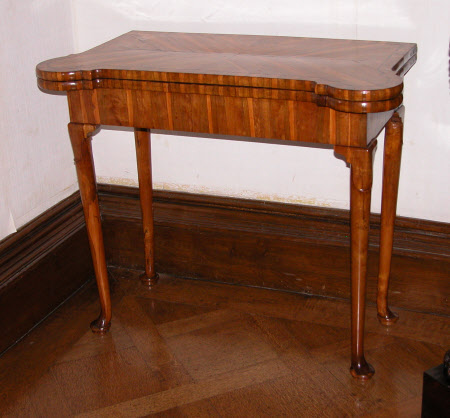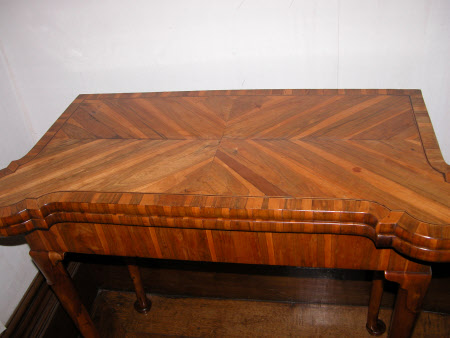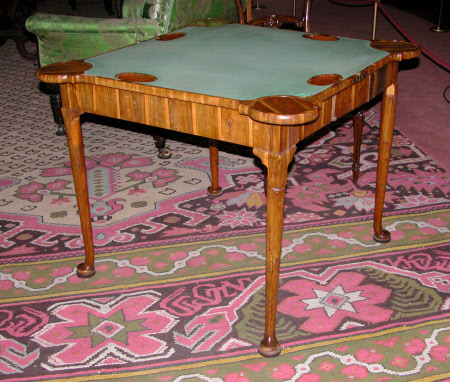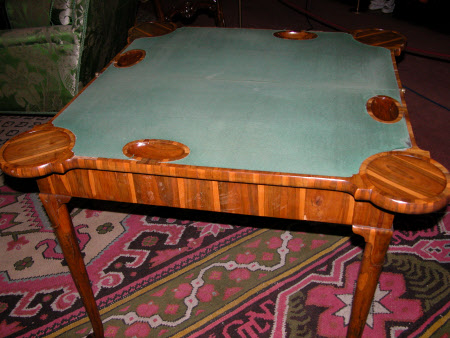Card table
Category
Furniture
Date
1720 - 1730
Materials
Cocus, oak construction, baize lining, brass
Measurements
70.5 x 89 x 89 cm
Place of origin
England
Order this imageCollection
Ickworth, Suffolk
NT 850034.2
Summary
One of a pair of cocus-wood card tables, English, circa 1725 The folding top with outset rounded corners and quarter laid veneers above a plain frieze with a hinged folding concertina action to the back legs to hold the top when open, the top with dished outset corner coasters and indented counter pockets with a green baize inset. The table raised on lappet carved turned cabriole legs and pad feet. Top covered with green wool baize, adhered to the surface of the table.
Full description
The card-table is veneered with cocus wood, a hard, dense wood with a dark brown heart and yellow sapwood, often referred to, erroneously, as laburnum. It was imported from the West Indies and was often known as West Indian ebony. It was used as a cabinet wood between 1660-1740 and in the present instance, a section of cocus wood has been sawn lengthways to provide a decoratively striped veneer which has been laid in quarters on the table top See A. Bowett, 'Myths of English Furniture History: Laburnum Wood Furniture', Antique Collecting, June 1998, pp.22-23). Illustrated in Dictionary of English Furniture (1954), Vol.3, p.188, fig.10. See also Christies, London - 17th March 2011 lot 193 for a similar example and Christie's London - 21 January 2010 lot 2 (James Weedon 2017)
Provenance
Part of the Bristol Collection. Acquired by the National Trust in 1956 under the auspices of the National Land Fund, later the National Heritage Memorial Fund
References
Macquoid, Percy, -1925 dictionary of English furniture : 1924-1927., Vol.3, p.188, fig.10. Bowett, Adam - 'Myths of English Furniture History: Laburnum Wood Furniture', Antique Collecting, June 1998, pp.22-23



